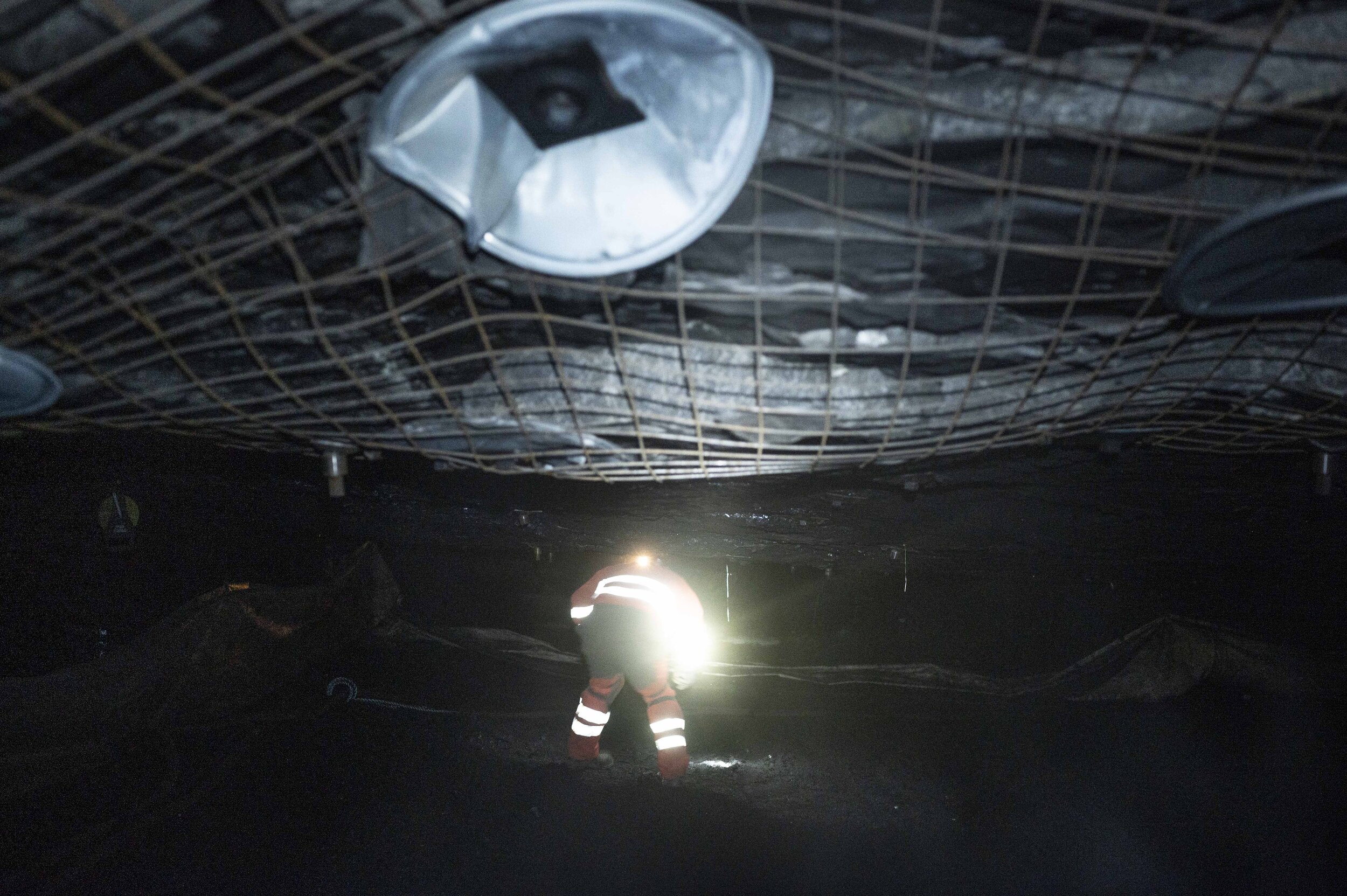
As miner Bent Jakobsen (49) moves into the inner-part of Gruve 7, he stops for a second: “Welcome to the most sacred”, he says proudly. Like it’s the beginning of a movie. An adventure. That’s what it’s been, Norwegian coal mining on Svalbard: An adventure. A long, long journey since the establishment of the coal company “Store Norske Spitsbergen Kullkompani” in 1916.
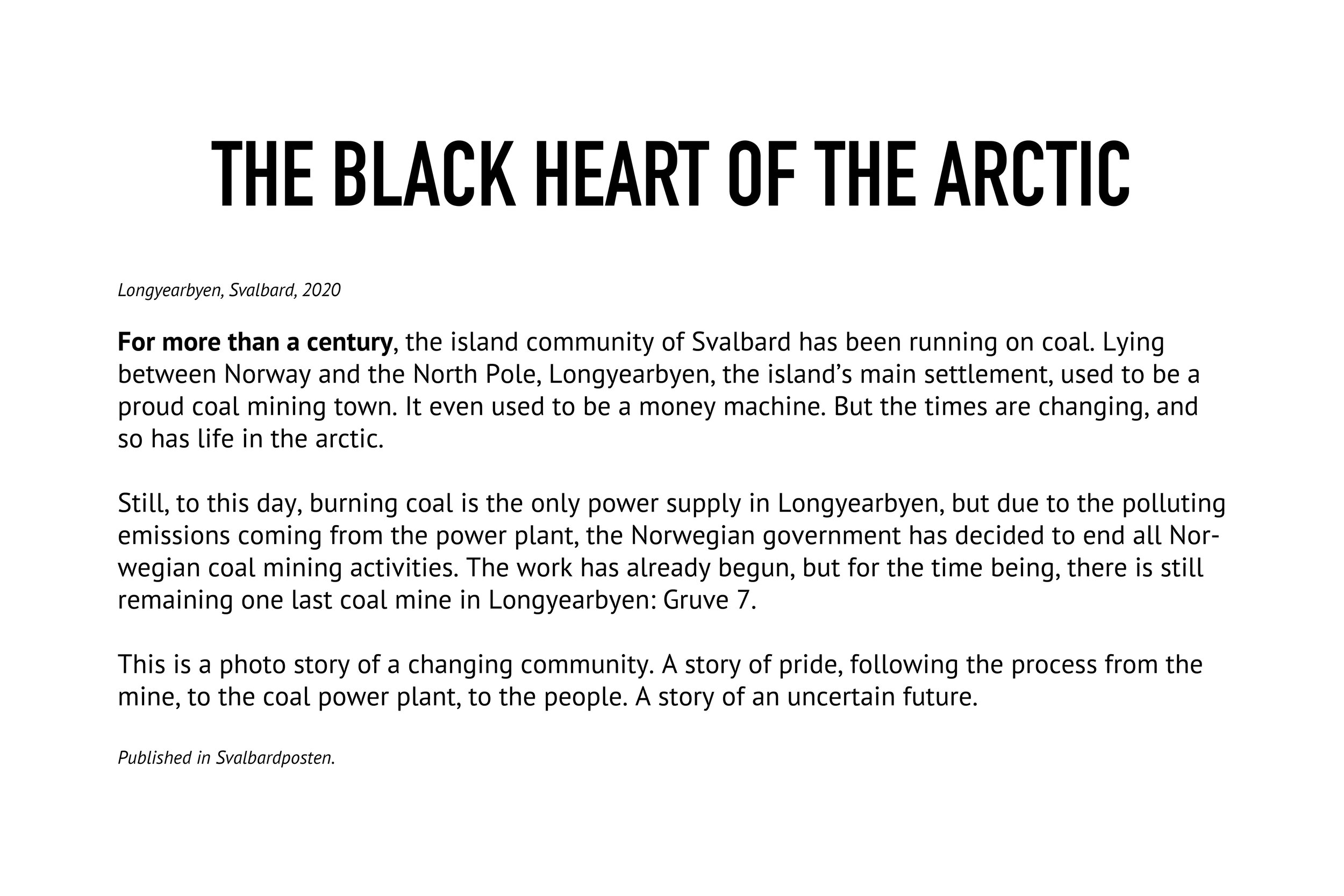
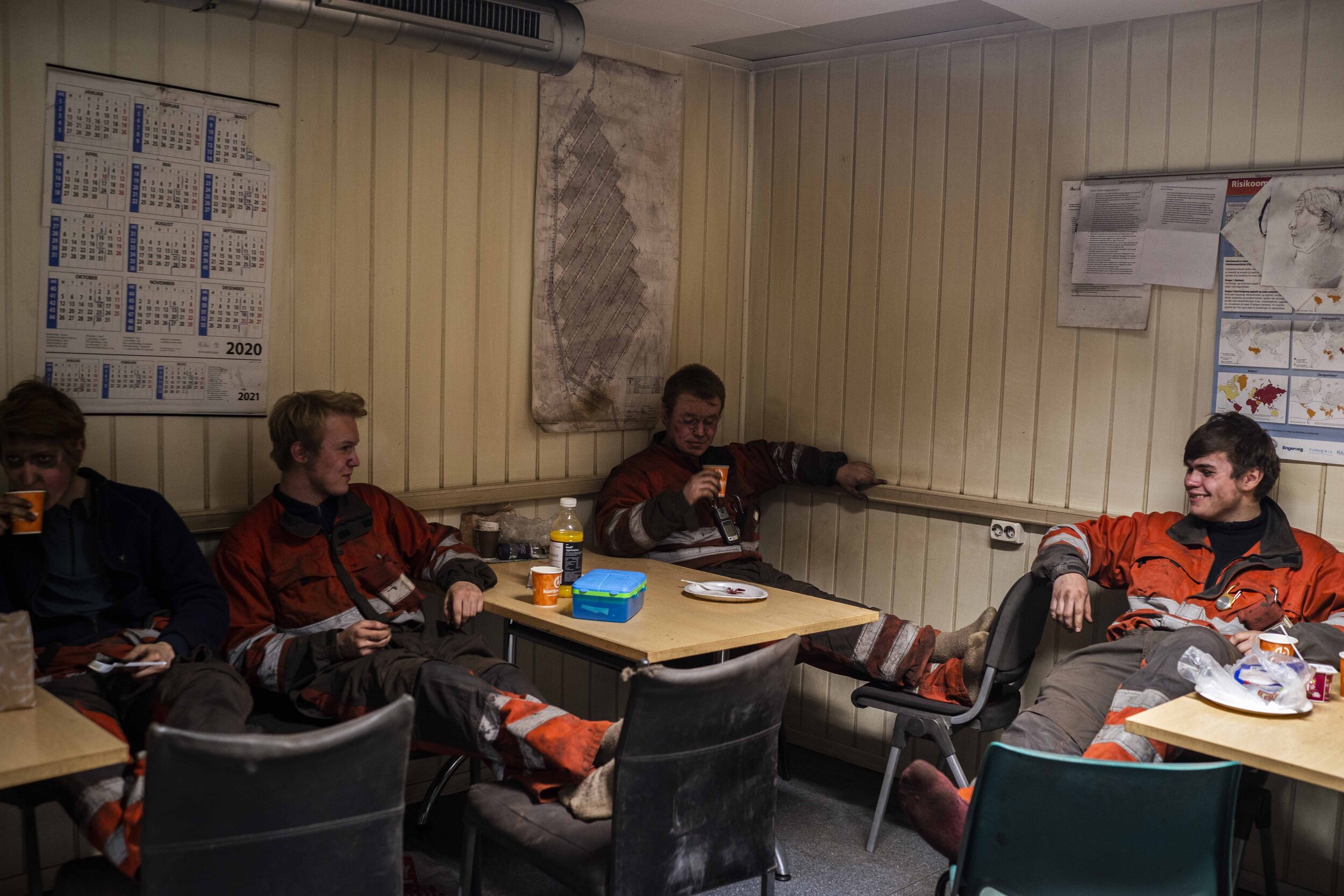
The deeper you get into the mine, the colder and darker it gets. Aside from the miner’s headlamps, they work for hours in pitch black circumstances, surrounded by coal dust. Luckily, the miners have a canteen inside the mountain where they meet for lunch. A bright room where they drink their coffee, and snuff their tobacco. Although most of the miners are middle-aged men, the age ranges from 17-59, and some, but very few of the workers are female.

When Egil Nikolai Hagen (17) grew up in Longyearbyen, the local coal miner's were his heroes. He had always dreamt of one day becoming one himself, but when the Norwegian government decided to shut down Svalbard’s main mine “Sveagruva” in 2016, his dream faded.
To Egil’s surprise, he got accepted as an apprentice in Gruve 7. One coal mining year later, he wears his yellow helmet with pride. Humble and grateful, he says: “I just wanted to be a part of it before it was too late”. Egil has decided to leave Svalbard when Gruve 7 one day gets shut down: “I’m certainly not going into the tourism business or anything like that”, he says.
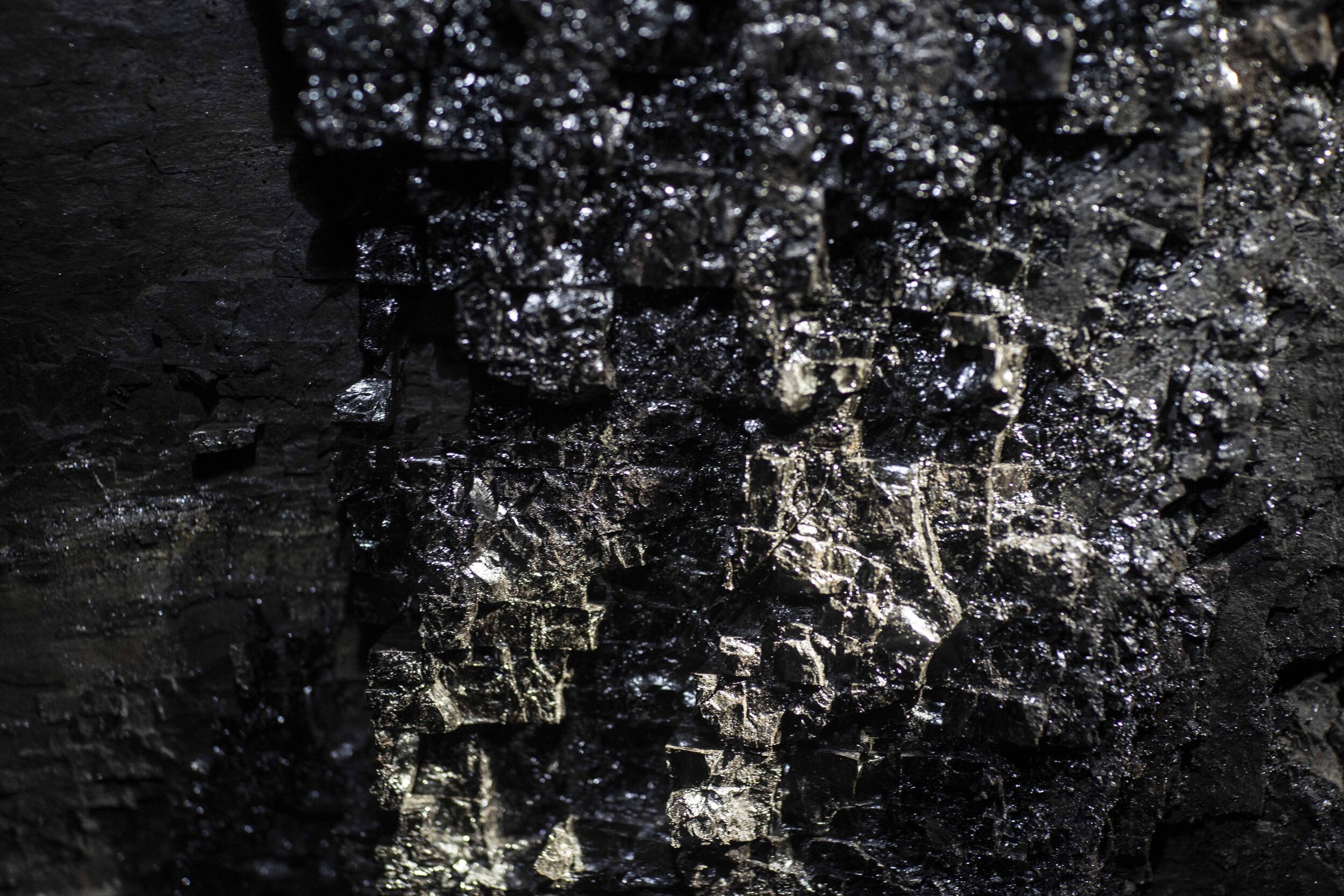
Much of the coal extracted from Gruve 7 stays in Longyearbyen. Either delivered directly to the coal power plant, or saved in the storage area at “Hotellneset”. The remainder is exported to Germany.
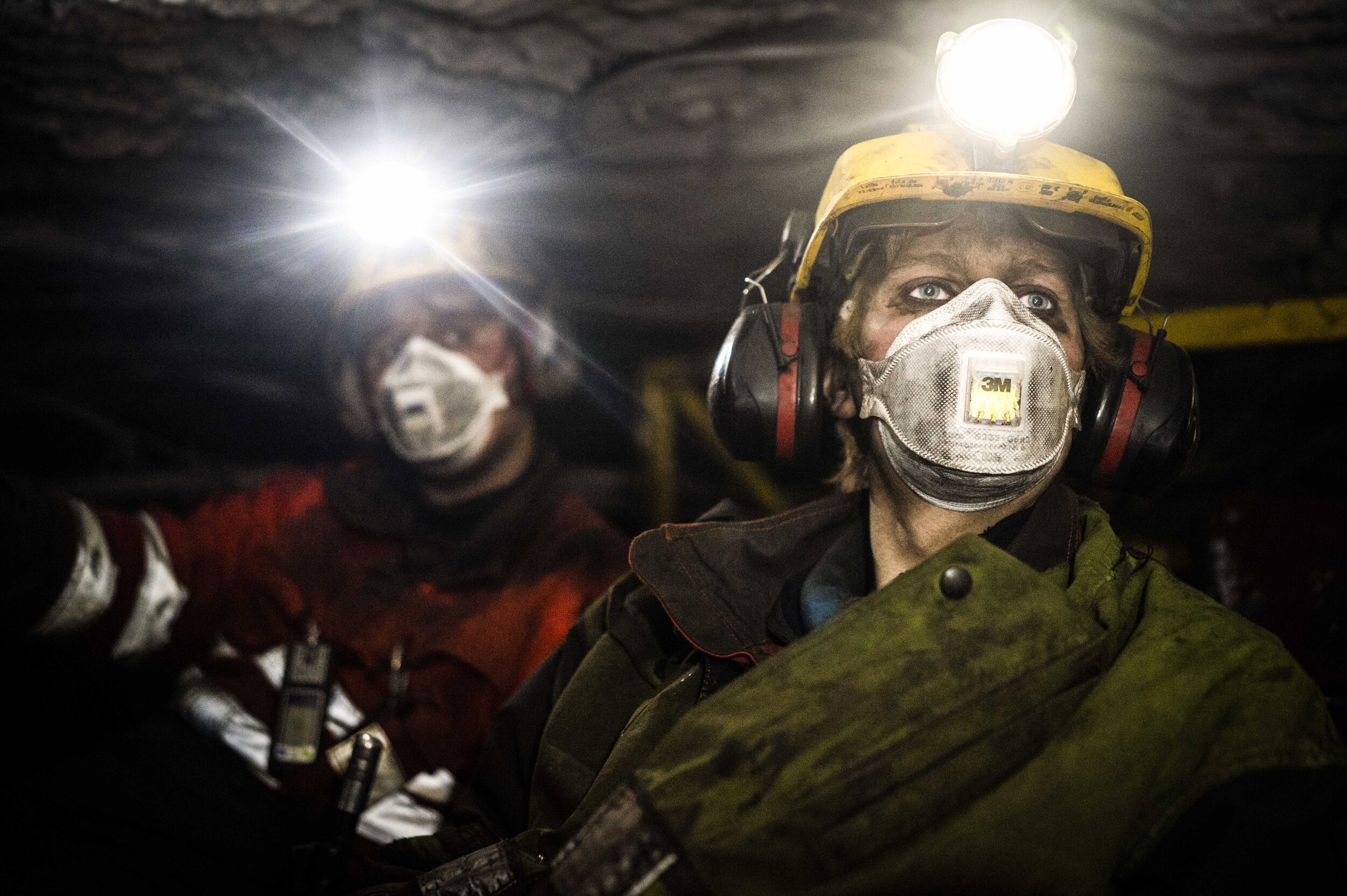
Two young coal miners on their way into the mine, in a short vehicle designed for the low height of Gruve 7, named “Olemannbilen”.

Victoria Isaksen (32) is one of two coal truck drivers in Longyearbyen. She’s been in the job since 2014, with a year off, giving birth on the mainland. – I’m proud of my job. Without the coal trucks, Longyearbyen would be without power, she laughs. During lunch, she sits in the corner of the canteen, surrounded by male co-workers. It’s Friday, which means waffles to the employees at LNS Spitsbergen. Laughter fills the room, and the man who makes the lot laugh is Victoria’s husband, Trond. With an arm around his wife, he smiles. – It’s great working with him, Victoria says, admitting to spending most of her work hours on the walkie-talkie with her husband. Together they have two children, loving the simple family life in Longyearbyen.

A major part of the roads in Longyearbyen is connected to the coal mining industry. After the coal trucks has been filled with coal on top of Gruvefjellet, the drivers follow the road in the only direction possible: To the coal power plant or to the storage area at Hotellneset, the outermost point to the left in this photograph. This route is repeated at least eight times a day by the drivers.
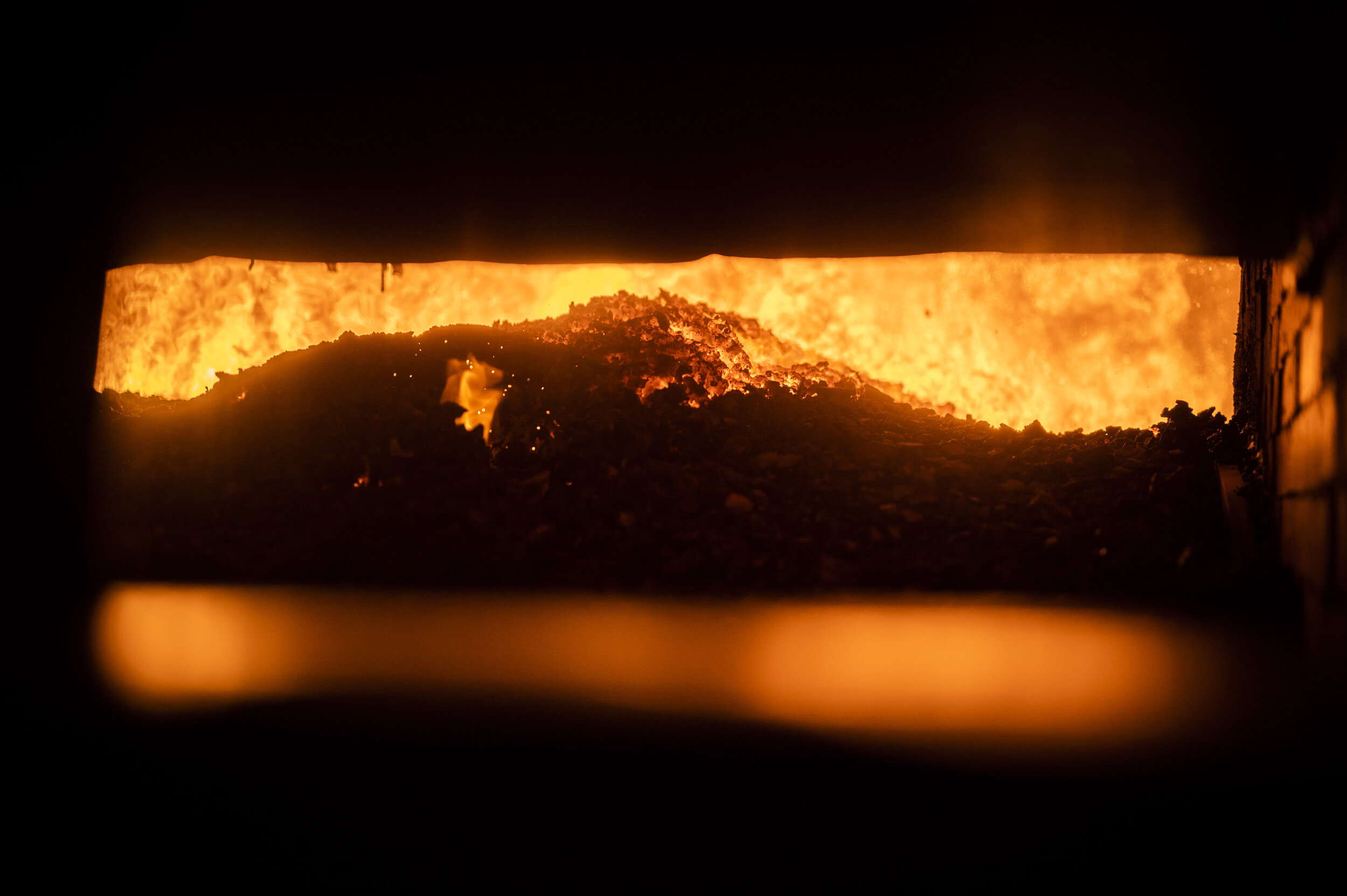
In the center of the coal power plant (Energiverket), a thirty meters tall furnace is burning coal 24/7. A small hatch at the bottom of the furnace opens the door to the sea of flames to what is the first step in the conversion of coal extracted from the mine. Since the 1910’s, the coal power plant in Longyearbyen has supplied the community with electricity and heat. Without the coal furnace, Longyearbyen will freeze.
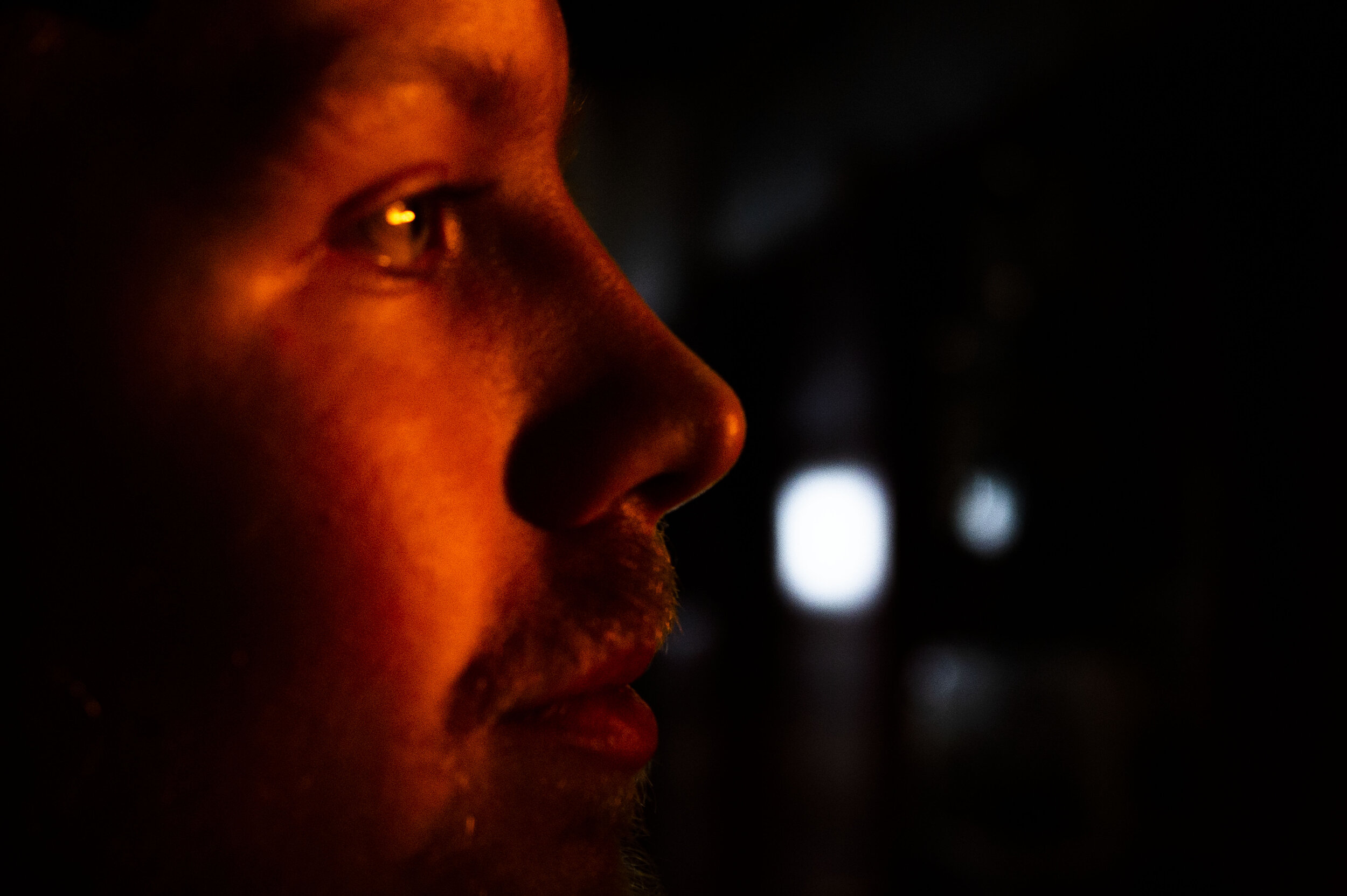
With the heat of burning coal striking towards him, Jonas Rognlid (23) admires his workplace for the summer. – It’s quite special, issn’t it? Norway’s only coal power plant… A dying industry, the 23 year old says, gazing at the flames. As an assistant machine operator at the power plant, his job mostly consists of preventive maintenance. If as much as a sensor in one of the turbins stops working, the whole power plant gets inoperative. According to production manager, Merwyn Thomsen, the plant has gone far beyond its lifespan, and is therefore extra well taken care of. – Obviously, the responsibility towards the local community crosses your mind a couple of times during the day, Jonas says.

The power cables from the generator on one of the turbines are leading power out of the coal power plant, to the homes of 2600 people in Longyearbyen.











As miner Bent Jakobsen (49) moves into the inner-part of Gruve 7, he stops for a second: “Welcome to the most sacred”, he says proudly. Like it’s the beginning of a movie. An adventure. That’s what it’s been, Norwegian coal mining on Svalbard: An adventure. A long, long journey since the establishment of the coal company “Store Norske Spitsbergen Kullkompani” in 1916.
The deeper you get into the mine, the colder and darker it gets. Aside from the miner’s headlamps, they work for hours in pitch black circumstances, surrounded by coal dust. Luckily, the miners have a canteen inside the mountain where they meet for lunch. A bright room where they drink their coffee, and snuff their tobacco. Although most of the miners are middle-aged men, the age ranges from 17-59, and some, but very few of the workers are female.
When Egil Nikolai Hagen (17) grew up in Longyearbyen, the local coal miner's were his heroes. He had always dreamt of one day becoming one himself, but when the Norwegian government decided to shut down Svalbard’s main mine “Sveagruva” in 2016, his dream faded.
To Egil’s surprise, he got accepted as an apprentice in Gruve 7. One coal mining year later, he wears his yellow helmet with pride. Humble and grateful, he says: “I just wanted to be a part of it before it was too late”. Egil has decided to leave Svalbard when Gruve 7 one day gets shut down: “I’m certainly not going into the tourism business or anything like that”, he says.
Much of the coal extracted from Gruve 7 stays in Longyearbyen. Either delivered directly to the coal power plant, or saved in the storage area at “Hotellneset”. The remainder is exported to Germany.
Two young coal miners on their way into the mine, in a short vehicle designed for the low height of Gruve 7, named “Olemannbilen”.
Victoria Isaksen (32) is one of two coal truck drivers in Longyearbyen. She’s been in the job since 2014, with a year off, giving birth on the mainland. – I’m proud of my job. Without the coal trucks, Longyearbyen would be without power, she laughs. During lunch, she sits in the corner of the canteen, surrounded by male co-workers. It’s Friday, which means waffles to the employees at LNS Spitsbergen. Laughter fills the room, and the man who makes the lot laugh is Victoria’s husband, Trond. With an arm around his wife, he smiles. – It’s great working with him, Victoria says, admitting to spending most of her work hours on the walkie-talkie with her husband. Together they have two children, loving the simple family life in Longyearbyen.
A major part of the roads in Longyearbyen is connected to the coal mining industry. After the coal trucks has been filled with coal on top of Gruvefjellet, the drivers follow the road in the only direction possible: To the coal power plant or to the storage area at Hotellneset, the outermost point to the left in this photograph. This route is repeated at least eight times a day by the drivers.
In the center of the coal power plant (Energiverket), a thirty meters tall furnace is burning coal 24/7. A small hatch at the bottom of the furnace opens the door to the sea of flames to what is the first step in the conversion of coal extracted from the mine. Since the 1910’s, the coal power plant in Longyearbyen has supplied the community with electricity and heat. Without the coal furnace, Longyearbyen will freeze.
With the heat of burning coal striking towards him, Jonas Rognlid (23) admires his workplace for the summer. – It’s quite special, issn’t it? Norway’s only coal power plant… A dying industry, the 23 year old says, gazing at the flames. As an assistant machine operator at the power plant, his job mostly consists of preventive maintenance. If as much as a sensor in one of the turbins stops working, the whole power plant gets inoperative. According to production manager, Merwyn Thomsen, the plant has gone far beyond its lifespan, and is therefore extra well taken care of. – Obviously, the responsibility towards the local community crosses your mind a couple of times during the day, Jonas says.
The power cables from the generator on one of the turbines are leading power out of the coal power plant, to the homes of 2600 people in Longyearbyen.